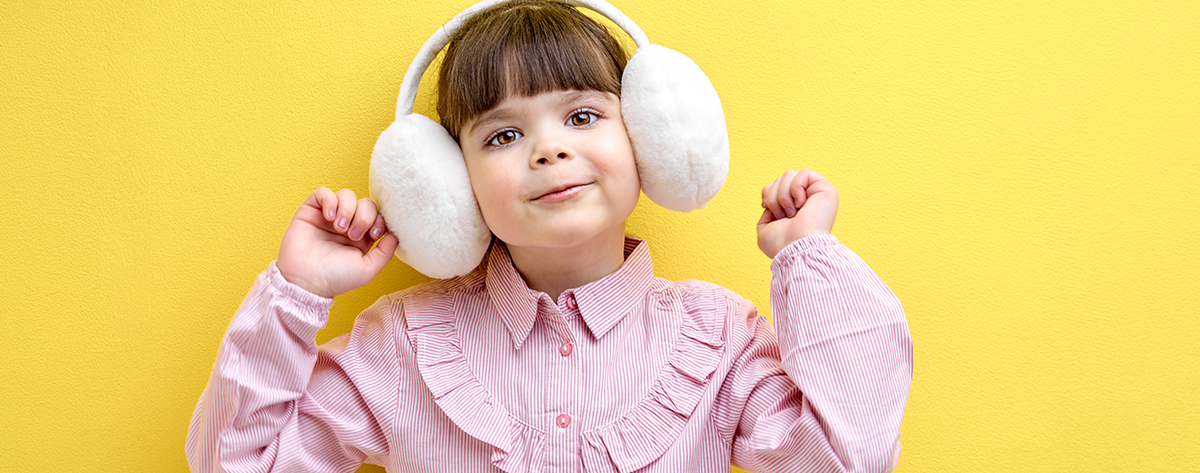Dr. Leah K. Light Au.D. is the founder and director of the Brainchild Institute in Hollywood, FL. She earned a Bachelor of Arts in Special Education and her Master of Science and clinical doctorate(Au.D.) degrees in Audiology. For the past 24 years, Dr. Light’s focus has been on neurodevelopmental audiology and Central Auditory Processing Disorders (CAPD).

The importance of touch has long been known to affect bonding, physical growth, immune system function, stress relief, and brain development; however, the connection between the auditory system and the system of touch is often overlooked. In children, sensory information from these two systems ascends to cortical centers by two parallel pathways known as the classical and non-classical auditory pathways.
Much is known about the classical auditory pathways, which are finely tuned and respond specifically to sound stimuli, yet little is discussed about the less discriminating and broadly tuned non-classical auditory pathways, which respond to multi-sensory stimuli including somatosensory and visual inputs. A study by Moller and Rollins in 2002 confirmed the cross-modality of these systems by showing that responses to sound could be modulated when simultaneously stimulating receptors in the tactile system. They found that this connection was especially active in young children and to a lesser degree in young adults until about age twenty, when the non-classical system matured and cross-modal interaction was no longer evident, allowing the phylogenetically newer, classical auditory pathways to preside. In this way, non-classical auditory pathways may play an important role in the development of some lower brain aspects of auditory processing such as sound awareness, sound recognition, localization, and reflexive motor responses to sound (e.g. acoustic stapedial reflexes and auditory startle response).
While the significance of the non-classical pathways has yet to be fully discovered, delays in the maturation of these pathways appears to have implications for children with a variety of neurodevelopmental disorders. Another study by Moller (2005) revealed that the non-classical auditory pathways were still active in some adult autistic individuals. This might also be true of other populations with neurodevelopmental issues, but only autism has been studied to date. Furthermore, connections of the non-classical pathways to the amygdala in the limbic system may help explain why some individuals have significant emotional reactions to auditory and tactile stimulation (e.g. loudness sensitivity reactions, tendency to cover ears, inability to have their head or ears touched, making loud noises).
While the non-classical auditory pathways are described in the literature as being “too great to be ignored” (Musiek et. al, 2011), few researchers have looked beyond this point to examine how a lack of maturation in these pathways may impact auditory development. In fact, most interventions for addressing Auditory Processing Disorders (APD) focus on the more finely tuned, frequency specific, classical auditory pathways. One possible approach to addressing immature non-classical pathways is to integrate primary (primitive) reflexes that have gone astray. These reflexes are present in neurologically healthy newborns across cultural boundaries. They are brainstem mediated, sensorimotor responses that are mostly cross-modal, thereby involving the non-classical pathways. Primary reflexes serve for protection and survival throughout the lifespan but are predominant in the newborn period up until about the first two years of life, around the same time the brainstem becomes fully myelinated. At this time, the reflexes come under cortical control and are integrated into the volitional movement system. Children with neurodevelopmental delays, including APD, often exhibit retained or poorly integrated primary reflexes, upsetting the foundation of neurological development which exists within the non-classical auditory pathways. Many of these primary reflexes involve the vestibular system (e.g. Moro, Tonic Labyrinthine, Asymmetric Tonic Neck Reflex), which serves as the basis for our reflexive responses to gravity and helps to temporally bind vision and hearing, the utilization of which is important for development of higher level skills such as speech-language, reading, and math in addition to socialization responses such as making eye contact while listening. Primary reflexes help to shape human development both physically and mentally. They temporally bind sensorimotor functions together and lead to more efficient and effective cognitive and emotional processing skills.
Using techniques provided by the Masgutova Neurosensorimotor Reflex Integration (MNRI) program, rehabilitation specialists can directly address retained or poorly integrated primary reflex pathways. Through repetitive, specific sensory stimulation and motor response patterns, the primary reflex “code” can be reset using neuroplasticity in much the same way that a computer programmer can rewrite code. Learning this genetic reflex code is what specialists certified in MNRI use to improve functioning of the non-classical auditory pathways, thereby enhancing motor development as well as listening, language, cognitive, and pragmatic skills.
REFERENCES
Masgutova S, MNRI Dynamic and Postural Reflex Pattern Integration (S. Masgutova and Svetlana Masgutova Educational Institute for Neuro-Sensory-Motor and Reflex Integration, LLC, 2012).
Moller AR, Kern JK, Grannemann B. Are the non-classical pathways involved in autism and PDD? Neurological Research 2005; 27[6]:625-629.
Moller AR, Rollins P. The non-classical auditory pathways are involved in hearing in children but not in adults. Neuroscience Letters 2002; 319[1]:41-44.
Musiek F, Mohanani A, Wierzbinski E, Kilgore G, Hunter J, Marrotto J. The non-classical pathway: Too great to be ignored. The Hearing Journal 2011; 64[10]:6-8.
If you would like to make an investment that lifts lives, brightens futures and strengthens the community, consider helping us. Please use the donate buttons below to select a secure method of online payment through PayPal, which allows donations by debit or credit card (PayPal keeps a two percent transaction fee for each donation).